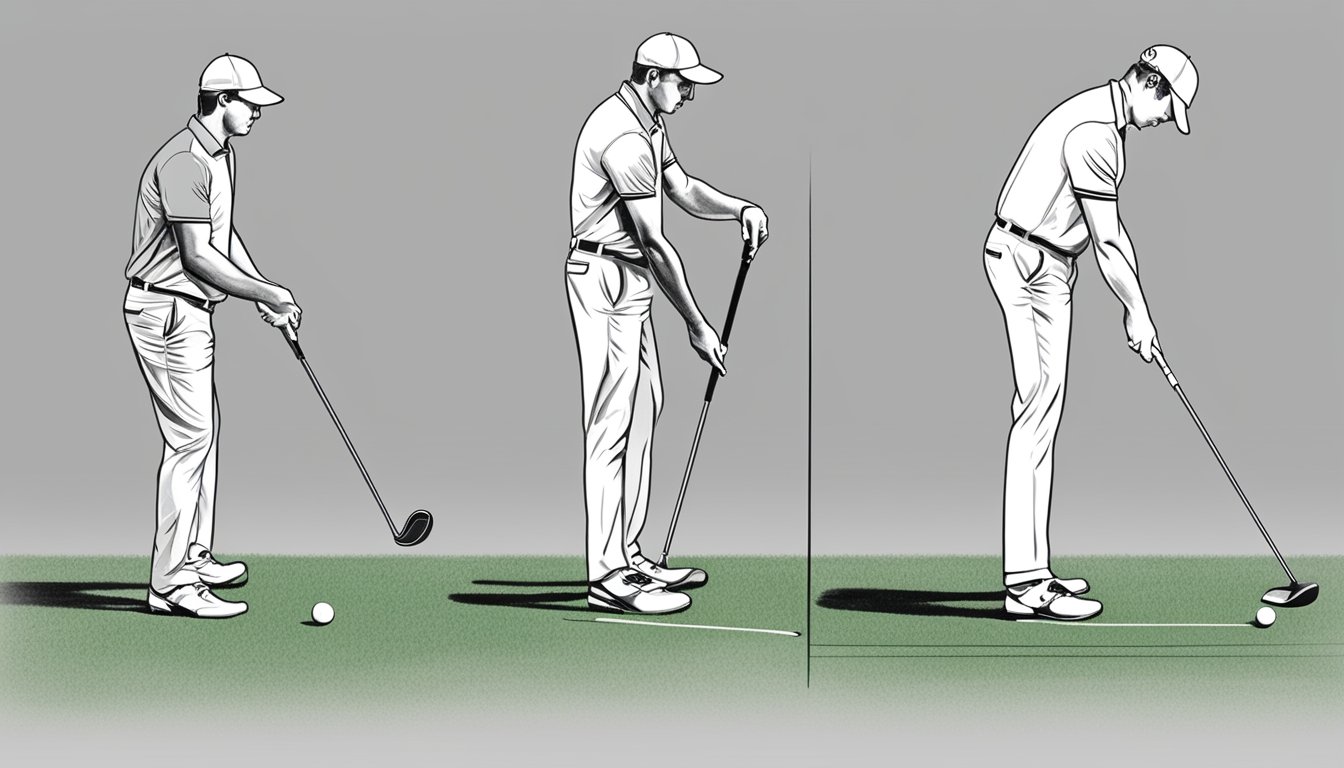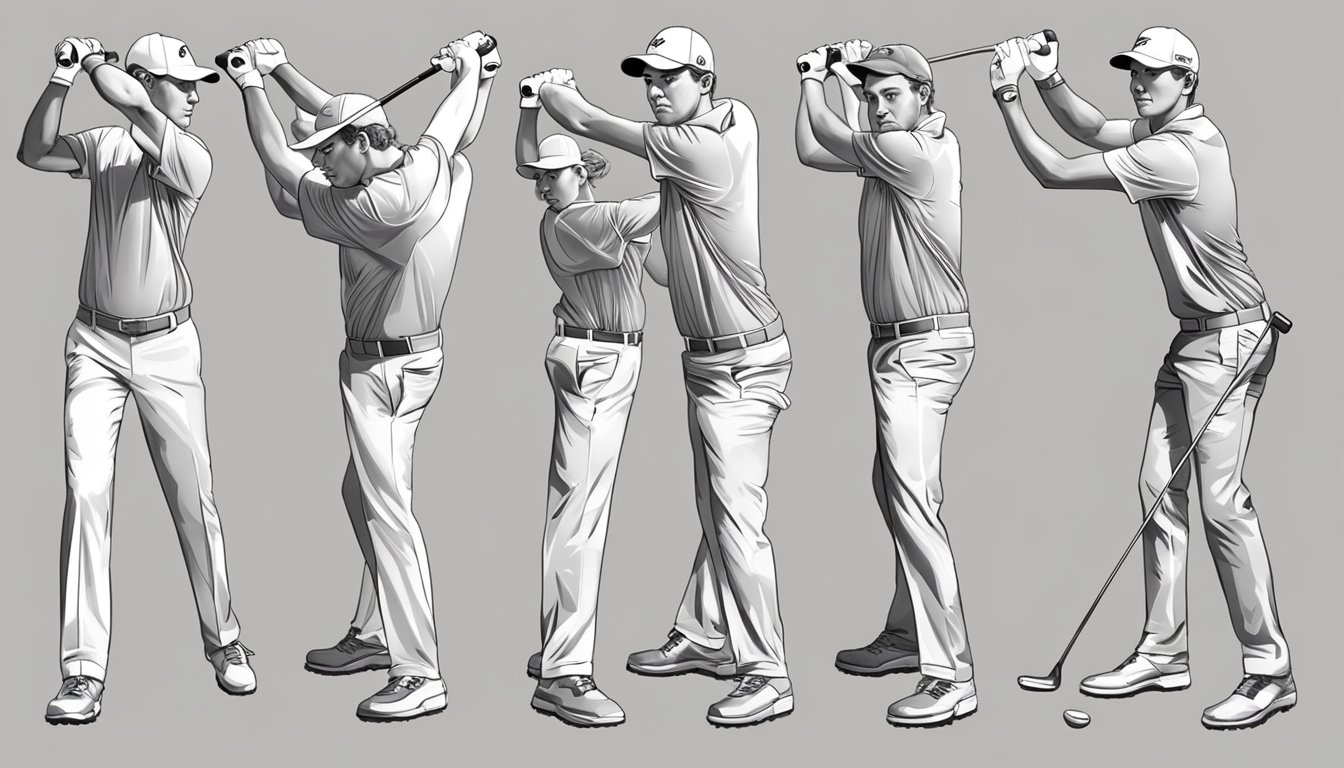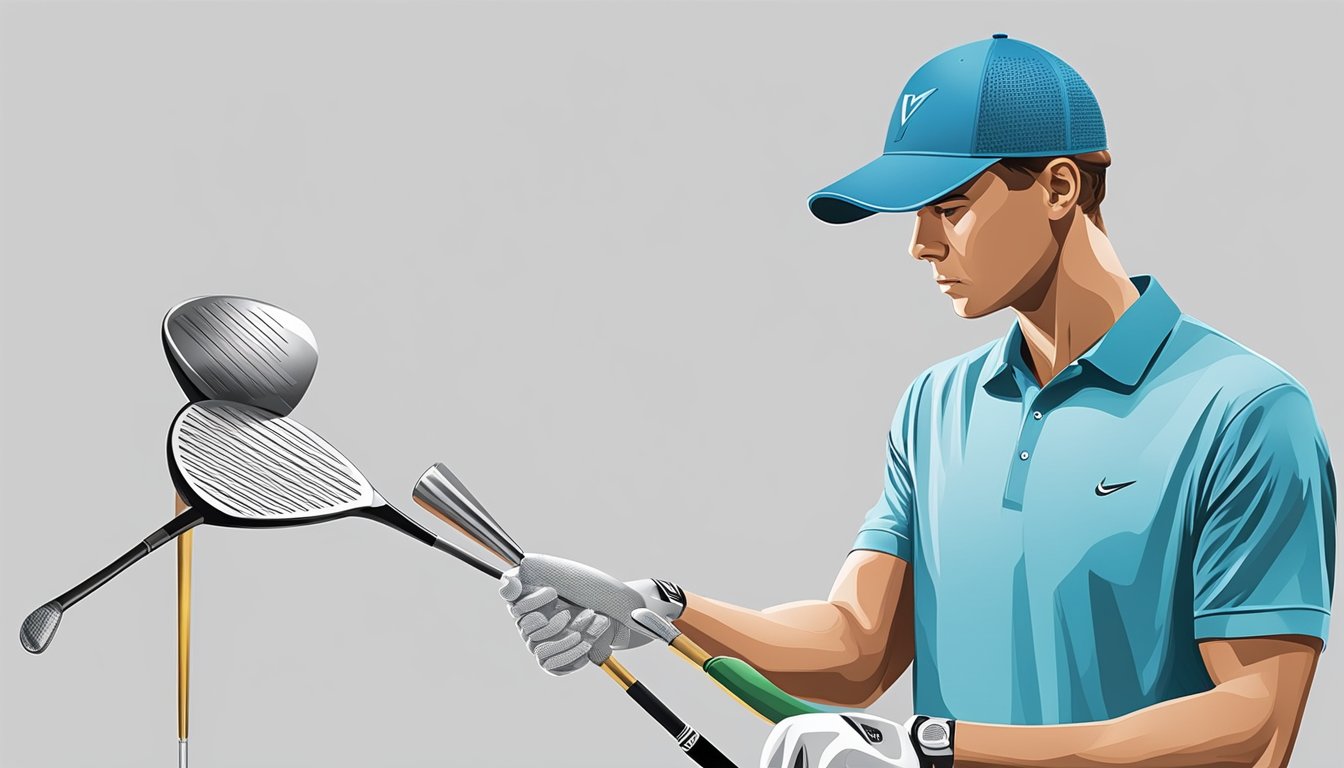If you’re an avid golfer, you know that choosing the right golf club is essential to improving your game. One of the most important factors to consider when selecting a golf club is the material of the shaft. The two most popular materials for golf club shafts are graphite and steel. Each material has its own pros and cons that can affect your swing and overall performance on the course.


Understanding the differences between graphite and steel golf club shafts can help you make an informed decision when selecting a golf club. Graphite shafts are lighter and more flexible, making them a popular choice for golfers who want to increase their swing speed. On the other hand, steel shafts are heavier and stiffer, providing more accuracy and control. It’s important to note that each golfer has their own unique swing and playing style, so what works for one golfer may not work for another.
Key Takeaways
- Golf club shafts are made of either graphite or steel.
- Graphite shafts are lighter and more flexible, while steel shafts are heavier and stiffer.
- Choosing the right shaft depends on your swing and playing style.
Understanding Golf Club Shafts
https://www.youtube.com/watch?v=aoCbLIXQlcU&embed=true
When it comes to golf club shafts, there are two main options on the market: steel and graphite. Each material has its own unique characteristics that can affect your game in different ways. In this section, we’ll take a closer look at these two types of shafts and what you need to know about them.
Steel Shafts
Steel shafts have been around for a long time and are still a popular choice for many golfers. They tend to be heavier than graphite shafts, which can give you a more solid feel when you swing. The added weight also provides more durability, which is especially important for irons and wedges that hit down into the turf regularly. Steel shafts also tend to be less expensive than graphite shafts, making them a budget-friendly option.
Graphite Shafts
Graphite shafts are relatively new to the golf world but have quickly gained popularity. They are lighter than steel shafts, which can help you generate more clubhead speed and distance. Graphite shafts also tend to have more flex than steel shafts, which can give you a softer feel and more forgiveness on off-center hits. They are also less likely to cause injury or strain on your joints, making them a good choice for older or physically limited players.
Flex
The flex of a golf club shaft refers to how much it bends when you swing. It’s important to choose the right flex for your swing speed and tempo to maximize your performance. Generally, slower swing speeds require more flex, while faster swing speeds require less flex. The most common flex options are regular, stiff, and extra stiff.
Technology and Manufacturing
Both steel and graphite shafts have benefited from advances in technology and manufacturing. Today’s golf club shafts are designed to be more consistent and precise than ever before, which can help you achieve more accuracy and distance on your shots. You can also find custom-fitted shafts that are tailored to your specific swing characteristics for even better results.
Hickory Shafts
While steel and graphite are the most common materials for golf club shafts today, hickory was the original material used in early golf clubs. Hickory shafts were known for their flexibility and feel, but they were also prone to breaking and warping. Today, hickory shafts are mostly used in vintage or replica clubs for historical purposes.
Overall, the choice between steel and graphite shafts comes down to personal preference and playing style. Both materials have their own pros and cons, so it’s important to try them out and see which one feels best for you. Keep in mind that the flex, technology, and manufacturing of the shaft can also play a significant role in your performance on the course.
Pros and Cons of Graphite Shafts

When it comes to golf club shafts, the two most popular materials are graphite and steel. Graphite shafts have become increasingly popular over the years, especially for drivers and fairway woods. In this section, we will discuss the pros and cons of graphite shafts to help you make an informed decision.
Performance Aspects
Graphite shafts are known to provide more distance than steel shafts, especially for golfers with slower swing speeds. They are also lighter, which allows for faster clubhead speed, resulting in higher ball speed and longer shots. Graphite shafts also offer more flexibility, which can help with shot shaping and trajectory control. However, this flexibility can also lead to less accuracy, especially for golfers with faster swing speeds.
Physical Characteristics
Graphite shafts are made from a composite material that is lightweight and flexible. This construction allows for a smoother feel and vibration dampening, which can reduce the risk of joint issues and fatigue. Graphite shafts are also more forgiving than steel shafts, making them a good choice for beginners and those who need more help with ball flight and control. However, they are also more expensive than steel shafts and may not be as durable.
Cost Considerations
Graphite shafts are generally more expensive than steel shafts, but they offer several advantages, such as increased distance, flexibility, and vibration dampening. If you have a slower swing speed or joint issues, graphite shafts may be a good investment. However, if you are on a budget, steel shafts may be a more affordable option. Keep in mind that the cost of the shaft is just one factor to consider when choosing a golf club.
In summary, graphite shafts offer several advantages, such as increased distance, flexibility, and vibration dampening. However, they may be less accurate and more expensive than steel shafts. When choosing a golf club, consider your swing speed, budget, and playing style to determine which type of shaft is best for you.
Pros and Cons of Steel Shafts
https://www.youtube.com/watch?v=jdbuBZMPtNQ&embed=true
If you are considering steel shafts for your golf clubs, it is important to understand the pros and cons of this material. Here are some of the most significant aspects to consider:
Performance Aspects
Steel shafts are generally heavier than graphite shafts, which can lead to more control and accuracy for some golfers. They also offer more stability, consistency, and feedback, making them a popular choice for professionals who prioritize precision and shot shaping. However, steel shafts may not be ideal for golfers with slower swing speeds, as they require more clubhead speed to generate distance.

Physical Characteristics
Steel shafts are known for their durability and longevity, making them a great investment for golfers who want to avoid frequent replacements. They also provide excellent shock absorption and vibration dampening, which can reduce the risk of joint issues and fatigue. Additionally, steel shafts are more affordable than graphite shafts, making them a budget-friendly option for golfers who want high-quality equipment without breaking the bank.
Cost Considerations
While steel shafts are generally more affordable than graphite shafts, there are still significant cost considerations to keep in mind. Customization options can add to the overall cost of your clubs, and some brands may charge more for their steel shafts than others. Additionally, golfers who prefer lightweight construction may find that steel shafts feel too heavy or uncomfortable.
Overall, steel shafts offer a range of benefits and drawbacks that may make them the right choice for certain golfers. If you prioritize control, accuracy, and durability, steel shafts may be a great option for your golf clubs. However, if you have slower swing speeds or prefer a more flexible, lightweight feel, graphite shafts may be a better fit for your game.
Choosing the Right Shaft for You
https://www.youtube.com/watch?v=xO09Rbvt_l8&embed=true
When choosing between graphite and steel golf club shafts, there are several factors to consider. One of the most important factors is your skill level. If you’re a beginner or have a slower swing speed, graphite shafts are generally lighter and can help you generate more clubhead speed and distance. On the other hand, if you’re an experienced player with a faster swing speed, steel shafts can provide more accuracy and control.

Another important factor to consider is the weight and feel of the shaft. Graphite shafts are generally lighter than steel shafts, which can make them more comfortable to swing and provide a smoother feel. However, steel shafts are often preferred by players who want a firmer feel and more feedback from the club.
Flex is also an important consideration when choosing a golf club shaft. Graphite shafts tend to have more flex than steel shafts, which can help players with slower swing speeds generate more clubhead speed and distance. However, steel shafts are often preferred by players who want more accuracy and consistency in their shots.
Accuracy and trajectory are also important factors to consider when choosing between graphite and steel shafts. Steel shafts provide better accuracy and consistency due to their weight distribution, while graphite shafts can provide a higher launch angle and more distance.
When it comes to cost, steel shafts are generally more affordable than graphite shafts. However, graphite shafts can be more forgiving and provide more shock absorption, which can help prevent joint issues and fatigue.
Ultimately, the right shaft for you will depend on your individual preferences and needs. It’s important to try out different shafts and get fitted by a professional to ensure that you’re using the right equipment for your game. Some professionals on the PGA and LPGA tour who prefer steel shafts include Brandt Snedeker and Matt Kuchar, while others like Lydia Ko and Michelle Wie prefer graphite shafts.

In summary, when choosing between graphite and steel shafts, consider factors such as skill level, weight, feel, flex, accuracy, trajectory, cost, forgiveness, and shock absorption. By taking these factors into account and getting fitted by a professional, you can choose the right shaft for your game and improve your performance on the course.
Frequently Asked Questions

Which type of shaft is better for beginners, graphite or steel?
Graphite shafts are generally better for beginners as they are lighter and easier to swing. They also provide more forgiveness on off-center shots due to their increased flexibility. Steel shafts, on the other hand, are heavier and require more precision to hit consistently. However, as you improve your swing, you may find that steel shafts provide better control and feel.
What are the advantages of using graphite shafts in golf clubs?
Graphite shafts have several advantages over steel shafts. They are lighter, which allows you to generate more clubhead speed and hit the ball farther. They also have more vibration-damping properties, which can give you better feedback on your shots. Graphite shafts are also more flexible than steel shafts, which can help you achieve a higher launch angle and more spin on the ball.
What are the disadvantages of using steel shafts in golf clubs?
Steel shafts are heavier than graphite shafts, which can make them more difficult to swing for some golfers. They also have less vibration-damping properties, which can make them feel harsher on mishits. Steel shafts are also less flexible than graphite shafts, which can make it more difficult to achieve a high launch angle and more spin on the ball.
Do professional golfers prefer graphite or steel shafts?
Professional golfers generally prefer steel shafts as they offer more control and feel. However, some professional golfers, particularly those with slower swing speeds, may prefer graphite shafts for their lighter weight and increased flexibility.
Are graphite shafts better for senior golfers?
Graphite shafts are often recommended for senior golfers as they are lighter and easier to swing. They also have more vibration-damping properties, which can help reduce the risk of injury. However, some senior golfers may prefer steel shafts for their increased control and feel.
What are the differences between graphite and steel shafts in golf clubs?
The main differences between graphite and steel shafts are weight, flexibility, and vibration-damping properties. Graphite shafts are lighter, more flexible, and have more vibration-damping properties than steel shafts. Steel shafts are heavier, less flexible, and have less vibration-damping properties than graphite shafts.










